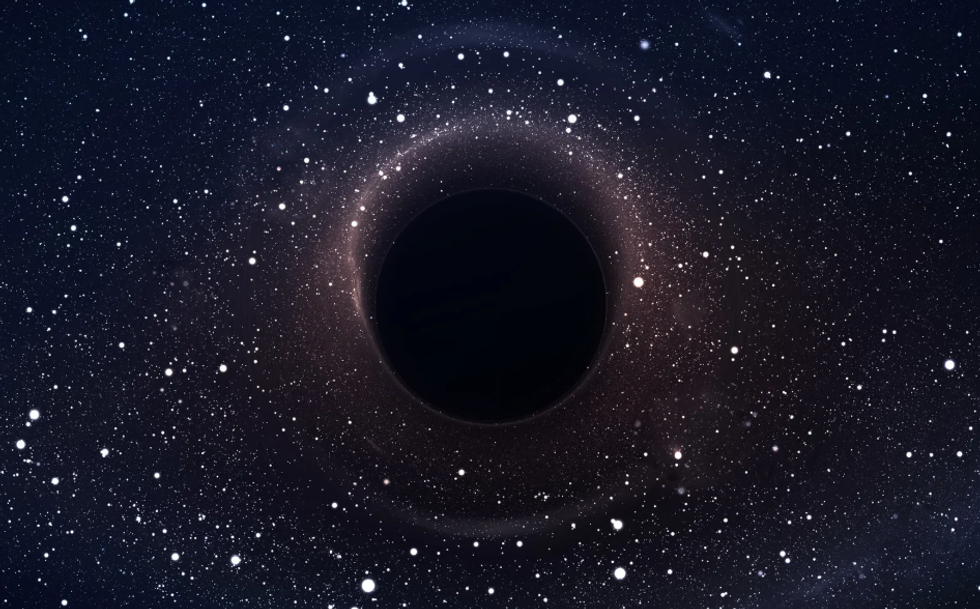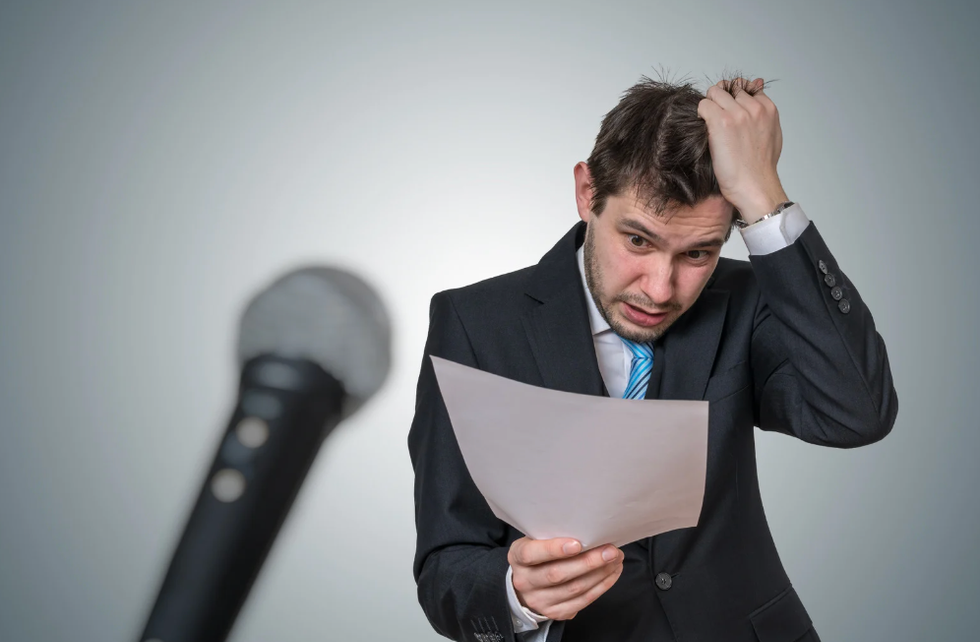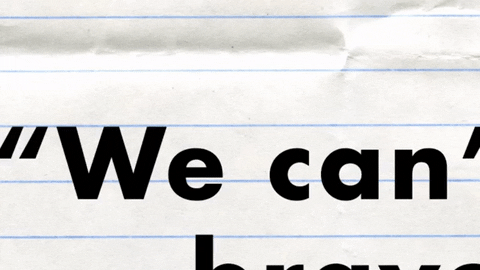Libby Ellwood has one big goal: to make science less intimidating. “I never felt intimidated by science because I was just more interested than intimidated, but people can feel like it’s too complicated,” she says.
Ellwood is an ecologist and research fellow at the La Brea Tar Pits and Museum in Los Angeles, home to one of the world’s richest deposit of ice age fossils. In addition to spending her days trying to figure out how changes in climate have impacted plants and animals over time, Ellwood also develops resources for “citizen scientists.”
Earlier this year, the La Brea Tar Pits partnered with Summit Preparatory Charter School in Los Angeles to pilot a new program that asks students to sort through microfossils and help collect data about the ice age for the museum. The initiative, which will eventually roll out to more schools in the city, aims to “reconstruct ancient food webs and then use models to test food web responses to 50,000 years of climate variability in Southern California.”
Recently, GOOD spoke with Ellwood about the program at Summit Prep and why it’s important to teach kids about climate change.
Have you always been into nature? What made you choose ecology?
I’ve always been interested in science in general, but my path to where I am now has been a little circuitous. I started off as a marine biologist, then I was an AmeriCorps volunteer where I was working with native reindeer herders in Alaska. Then I decided I wanted to be more involved with the teaching side of science, so I became a high school science teacher for a few years. I really enjoyed that, but then I also missed the research side. So I went back to grad school to get my Ph.D. in ecology.
[quote position="left" is_quote="true"]The hands-on experience is more effective than just showing them videos of polar bears or teaching them about Arctic regions.[/quote]
While getting my Ph.D., I studied how climate change is impacting plants and animals, and that’s when I came into the world of citizen science. I really enjoyed exploring through citizen science. I could take the parts that I enjoyed about education and sharing my passion for science with non-scientists with my research and getting people involved in collecting data and getting people directly involved with research. So that’s what brought me to the project that I’m working on now, which is really has a strong research focus, but my place is in the project is engaging citizen scientists and non-scientists in the research.
How did the museum end up partnering with Summit Prep?
We knew we wanted to do this project, and we wanted to pilot this project at a school and had a connection at Summit Prep through the museum. We knew there were teachers there who had an interest in doing this project with us, so we pursued it. As a pilot, we knew there might be some things that still needed to work out, so we knew we didn’t want to roll it out in a big way to all the L.A. schools. This year, we plan to grow it to more middle school classrooms as well as high school classrooms to see which grade level responds best and which curriculum it fits in better.
What does the program entail?
t all starts months before there are kids are in the classroom. There’s a lot of development that happens here where we’re preparing the microfossils. On the teacher’s side, we bring them in for a workshop where they learn all about the La Brea Tar Pits, the science and the research here, and they get a tour around — not just the public parts of the building — but the behind the scenes stuff. They get to see our research, our collections, and they get a better sense of how important it is that we have their students helping with our research.
After the workshop, if they’re interested in having a kit in their classroom and they meet the requirements — meaning they are teaching a grade level that we’re targeting and have the ability to develop some curriculum around the kits — then we’ll work with them.
The kits are designed to be pretty intuitive off the bat so a student without any background in this would be able to contribute in a meaningful way. That’s what this citizen scientist comes down to, having a non-scientist contribute directly to our research while they’re also learning about the research and the topic.
For this project, the kids have a small amount of microfossils, which are not the big sabertooth cats or mammoths but rather the small plants and mammals. These are all in a pile, and using a paintbrush, they sort through these gravel-sized bits and divide them into bones or insect parts. All along, they’re learning about things like food webs and why it’s important we understand whom is eating whom and what animals are eating which plants, or maybe they’re learning about the particular animals.
Aside from the hands-on connection to science, what are you hoping kids get out of the project?
The Natural History Museum of L.A. has a great program called For Teachers, By Teachers, where the teachers develop the curriculum, and we provide them a small stipend to help them with that. In doing that, we provide the scientific material, the research background, and some resources they can use in their classroom — be it books or these microfossils.
We also work with teachers to develop what works in their curriculum, so if they’re doing a unit on ecology, they could fit this in however they need to. We don’t dictate or impose restrictions on what they do with the material, we just provide the foundational information so they can use it however they like. We present the fact that the microfossil sorting kits are contributing to climate change research and paleo food webs, but the teachers can go in whatever direction they like.
Sadly, we’re still debating whether or not climate change is real. Is that why it’s important to have these discussions with children?
Yes. Climate change is happening, not only to polar bears in the Arctic region or in far away places they’ll probably never see in real life, but it is impacting every corner of the Earth — even Southern California, even Los Angeles, even our backyard.
[quote position="left" is_quote="true"]Climate change is happening, not only to polar bears in the Arctic region or in far away places ... but it is impacting every corner of the Earth.[/quote]
What the fossil kits do is provide the students a hands-on experience that ties them into the process of thinking about climate change and how organisms in the past were impacted by climate change because some of those plants and animals don’t exist around here anymore and it’s quite possible that climate played a role in that. So when you’re able to understand how plants and animals existed under different periods of climate, as they did during the ice age here, we can potentially predict what will happen to organisms here in Southern California now and in the future.
The hands-on experience is more effective than just showing them videos of polar bears or teaching them about Arctic regions, which are certainly very much affected by climate change, but it’s also happening here.
When I think about climate change, sometimes it just feels so hopeless because it seems like such a big probably that governments, not people, can fix. But when you’re talking to children about it, how do you explain it in a way that doesn’t bring them down or make them feel like there’s no hope?
That is tricky. But we live in Los Angeles, a biodiversity hotspot, meaning there’s a higher number of plant and animal species here than many other parts of the world. So that right there means that we have a lot of life here and there’s a lot worth saving. Even though we have experienced some degree of climate change already, it’s not over. There’s a lot we can save.
I [talk to children] about conservation and how there’s a lot we can do to not only save plants and animals, but there’s also things we can do to reduce the effects of climate change. It might seem a little hopeless or like turning off the lights or driving less might not save the world, but we can vote, we can elect politicians who care about climate change and who are willing to put in restrictions or actions that will help mitigate the effects of climate change. Even a middle schooler can appreciate the fact that people vote and we have leaders and it’s those leaders who really inform what our country does. So having those conversations young is important.















 Visualization of a black holeImage via Canva
Visualization of a black holeImage via Canva

 Speaking in public is still one the most common fears among people.Photo credit: Canva
Speaking in public is still one the most common fears among people.Photo credit: Canva muhammad ali quote GIF by SoulPancake
muhammad ali quote GIF by SoulPancake

 Let us all bow before Gary, the Internet's most adventurous feline. Photo credit: James Eastham
Let us all bow before Gary, the Internet's most adventurous feline. Photo credit: James Eastham Gary the Cat enjoys some paddling. Photo credit: James Eastham
Gary the Cat enjoys some paddling. Photo credit: James Eastham James and Gary chat with Ryan Reed and Tony Photo credit: Ryan Reed
James and Gary chat with Ryan Reed and Tony Photo credit: Ryan Reed


 Rock deterioration has damaged some of the inscriptions, but they remain visible. Renan Rodrigues Chandu and Pedro Arcanjo José Feitosa, and the Casa Grande boys
Rock deterioration has damaged some of the inscriptions, but they remain visible. Renan Rodrigues Chandu and Pedro Arcanjo José Feitosa, and the Casa Grande boys The Serrote do Letreiro site continues to provide rich insights into ancient life.
The Serrote do Letreiro site continues to provide rich insights into ancient life.